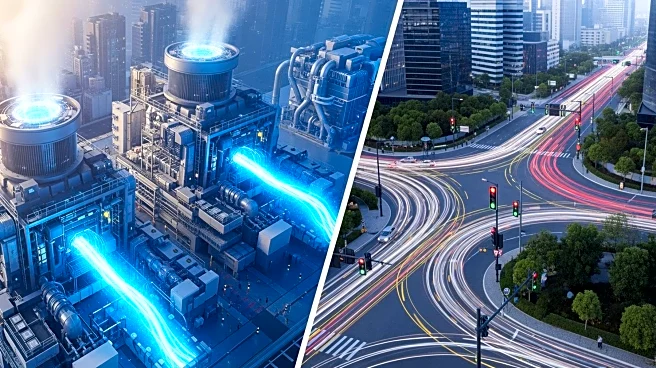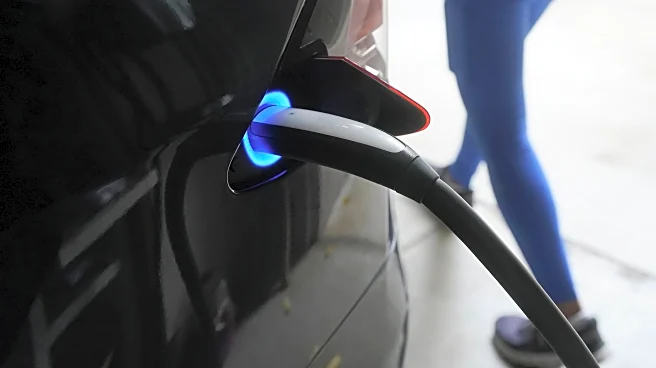What's Happening?
Artificial intelligence (AI) is being leveraged to enhance environmental sustainability, despite its own significant energy demands. AI applications are being developed to improve energy efficiency in buildings, optimize electric vehicle charging, and reduce
emissions from oil and gas operations. Notably, Salt Lake City-based startup Zanskar is using AI to identify geothermal hot spots, leading to successful discoveries in New Mexico and Nevada. Additionally, Google's Project Green Light is utilizing AI to optimize traffic light patterns, reducing stop-and-go traffic and emissions in cities like Boston. These initiatives demonstrate AI's potential to mitigate its environmental impact by improving energy efficiency and reducing pollution.
Why It's Important?
The integration of AI in environmental management holds significant potential for reducing greenhouse gas emissions and improving energy efficiency. By optimizing building operations, AI can cut energy consumption by up to 30%, contributing to a reduction in the one-third of U.S. greenhouse gas emissions attributed to buildings. In the transportation sector, AI-driven traffic management can decrease emissions by 10%, enhancing urban air quality. Furthermore, AI's role in identifying geothermal energy sources supports the transition to renewable energy, aligning with broader climate goals. These advancements highlight AI's dual role as both a consumer and a mitigator of energy, offering a pathway to more sustainable practices.
What's Next?
As AI technologies continue to evolve, their application in environmental management is expected to expand. Future developments may include more sophisticated AI models for energy optimization and broader adoption of AI-driven traffic management systems. Stakeholders, including city planners and energy companies, are likely to increase investments in AI solutions to meet sustainability targets. Additionally, regulatory frameworks may evolve to support the integration of AI in environmental strategies, ensuring that its benefits are maximized while minimizing its energy footprint.














